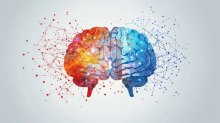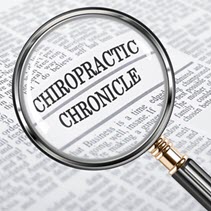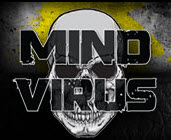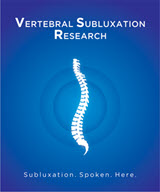Chiropractic Care for Seizures: A Review of Recent Studies

Chiropractic care has emerged as a complementary approach for managing neurological conditions, including epilepsy and seizures, particularly when traditional medical treatments such as antiepileptic drugs (AEDs) have proven insufficient. A growing body of case studies and clinical reports indicates that chiropractic adjustments, particularly those aimed at correcting vertebral subluxations, may help reduce the frequency and intensity of seizures in both pediatric and adult patients. Below is a review of the current literature that highlights the potential benefits of chiropractic care for people with seizure disorders.
1. Upper Cervical Care and Seizures
One of the most well-documented approaches to chiropractic care for seizure disorders is upper cervical chiropractic care. In a case study by Hartenberg and Denton (2017), a 22-year-old female with epilepsy experienced significant improvements after receiving upper cervical adjustments. After 14 office visits, the patient reported cessation of seizure activity, and her Quality of Life in Epilepsy (QOLIE-89) score improved by 51 points, demonstrating a notable enhancement in her overall well-being.
Similarly, a 4-year-old boy with intractable frontal lobe epilepsy showed a reduction in seizure frequency and improved quality of life after receiving upper cervical chiropractic care. His care involved the use of thermography and subluxation analysis, which led to adjustments of the C1 vertebra. The reduction in seizures marked a significant improvement in his daily life.
2. Reduction of Seizures in Pediatric Patients
Chiropractic care has shown promise in reducing seizure activity in children suffering from epilepsy and other seizure disorders. For instance, Sigmon, Hudson, and Alcantara (2018) reported on the case of a 3-year-old male with absence and clonic seizures who experienced a reduction in seizure frequency after chiropractic adjustments. The care involved the use of the Toggle-recoil technique to address an atlas subluxation, leading to a notable reduction in seizure episodes.
Additionally, a case study by Smolick and Balthaser (2017) described a 2-year-old female with lissencephaly, a severe cortical malformation associated with seizures. After receiving chiropractic care that included a combination of Logan Basic, Diversified Full Spine, and Cranial-Sacral techniques, the toddler's seizures significantly reduced, along with improvements in motor control and coordination.
3. Case Studies on Seizure Cessation
Several case reports document instances where chiropractic care led to the complete cessation of seizure activity. One case involved a 20-year-old male who had been experiencing seizures of unknown origin, as well as neck and low back pain. After receiving high-velocity, low-amplitude adjustments using Diversified Technique, his seizure activity ceased within a week of starting chiropractic care. After 13 weeks, his neurologist discontinued all seizure medications due to the sustained improvements.
In another case, a 15-month-old infant with atonic seizures experienced a complete resolution of seizures after undergoing specific chiropractic adjustments for vertebral subluxation. The care included adjustments to the upper cervical, dorsal, lumbar, and pelvic regions, leading to significant neurological improvements.
4. Psychogenic Non-Epileptic Seizures (PNES) and Chiropractic
Chiropractic care has also been shown to be effective in managing Psychogenic Non-Epileptic Seizures (PNES), a condition that often mimics epilepsy but is rooted in psychological factors rather than abnormal brain activity. A case report by Friedman and Puro (2019) demonstrated the resolution of PNES in a female patient after receiving chiropractic care using the QSM3 protocol. The patient, who had been suffering from tremors, body convulsions, and loss of motor control, became symptom-free after five months of chiropractic care aimed at correcting upper cervical subluxations.
5. Improvement in Cognitive and Behavioral Function
In addition to seizure reduction, chiropractic care has been linked to improvements in cognitive development and behavioral disturbances associated with seizure disorders. Komarek et al. (2015) reported on the case of a 2-year-old boy with seizures, behavioral disturbances, and developmental delays following head trauma. After receiving knee-chest upper cervical chiropractic care over a period of 5.5 months, the boy's seizure activity ceased, and his behavior and cognitive abilities improved markedly.
Conclusion
The literature on chiropractic care for seizure disorders suggests that chiropractic adjustments, particularly those focused on correcting vertebral subluxations, may offer significant benefits to both pediatric and adult patients with seizures. These benefits include the reduction or cessation of seizures, improvements in quality of life, enhanced cognitive function, and better behavioral outcomes. Given the potential for chiropractic care to provide relief where traditional medical treatments may fall short, further research is encouraged to explore the mechanisms underlying these improvements and to establish standardized treatment protocols for seizure management in chiropractic practice.
CLICK HERE to access these studies
References
- Friedman, R., & Puro, S. (2019). Resolution of Psychogenic Non-Epileptic Seizures Following Chiropractic Care: A Case Study & Review of the Literature. Journal of Upper Cervical Chiropractic Research, February 11, 2019.
- Foltz, J., & Hafer, J. (2017). Resolution of Seizures in a 20-Year-Old Male Following Chiropractic Care to Reduce Vertebral Subluxation: A Case Study & Review of the Literature. Vertebral Subluxation Research, July 20, 2017.
- Hapner-Petron, S., & Lieberman, B. (2017). Reduction of Seizures in a Four-Year-Old Male with Intractable Frontal Lobe Epilepsy Following Upper Cervical Chiropractic Care: A Case Study. Journal of Pediatric, Maternal & Family Health Chiropractic, May 15, 2017.
- Hartenberg, M., & Denton, A. (2017). Resolution of Seizures & Improvement in Quality of Life in a 22-Year-Old Female with Epilepsy Following Upper Cervical Chiropractic Care. Journal of Upper Cervical Chiropractic Research, February 23, 2017.
- Komarek, A. J., Tedder, N., & Tedder, A. (2015). Cessation of Seizures, Behavioral Disturbances and Improvement in Cognitive Developmental Delay Following Upper Cervical Chiropractic Care in a 2-Year-Old: A Case Report. Journal of Upper Cervical Chiropractic Research, May 14, 2015.
- Livingood, B., & Feizi, S. (2016). Resolution of Chronic Epileptic Seizures & Improved Cervical Curve Following Chiropractic Care: A Case Report. Vertebral Subluxation Research, August 1, 2016.
- McCauley, N. (2018). Resolution of Chronic Seizures in an Infant Undergoing Chiropractic Care for Vertebral Subluxation: A Case Report and Review of the Literature. Journal of Pediatric, Maternal & Family Health Chiropractic, December 27, 2018.
- Sigmon, P., Hudson, M., & Alcantara, J. (2018). Reduction of Seizures & Self-Aggression Following Chiropractic Care to Reduce Upper Cervical Subluxation in a 3-Year-Old Male: A Case Study & Review of the Literature. Journal of Upper Cervical Chiropractic Research, April 5, 2018.
- Smolick-Reese, E., & Balthaser, J. (2017). Reduction of Seizures in a Toddler with Lissencephaly Undergoing Chiropractic Care: A Case Study & Review of the Literature. Journal of Pediatric, Maternal & Family Health Chiropractic, October 30, 2017.
- Sweat, R., & Pottenger, T. (2012). Seizure, Ataxia, Fatigue, Strabismus and Migraine Resolved by Precise Realignment of the First Cervical Vertebra: A Case Report. Journal of Upper Cervical Chiropractic Research, March 12, 2012.

Research News
- The 19th International Research and Philosophy Symposium (IRAPS): Bridging Philosophy, Science, and Practice in Chiropractic
- New Study Uncovers the Broad Systemic Benefits of Chiropractic Care on Nervous, Endocrine, and Immune Systems
- The Hidden Power of the Spine: How Vertebral Subluxation Impacts Health Through Systems Biology
- New Study Sheds Light on Vertebral Subluxation and Systems Biology
- Understanding Cervical Spine Movement and Motor Vehicle Accidents













